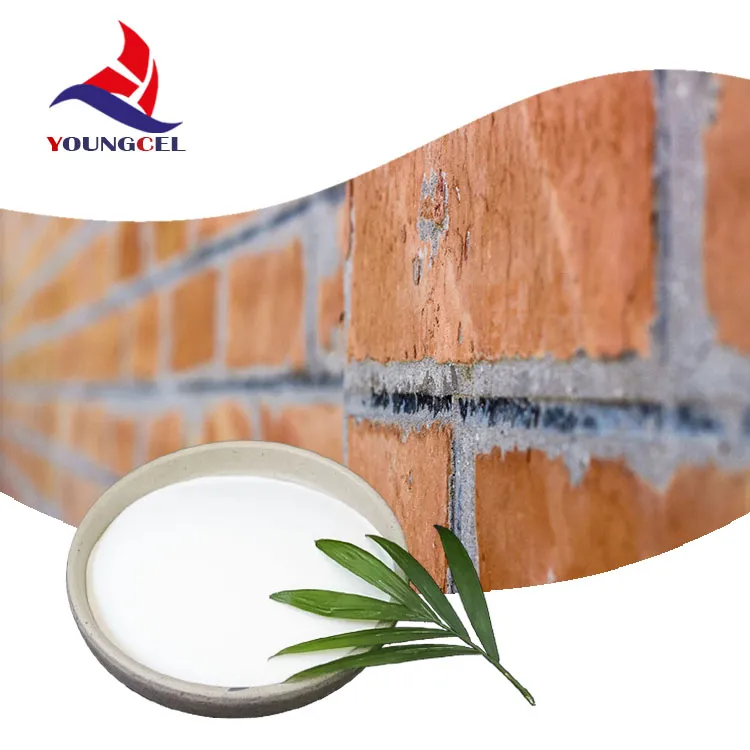Exploring the Role of Hydroxypropyl Methylcellulose (HPMC) in the Chemical Industry
Hydroxypropyl Methylcellulose (HPMC) is a versatile compound that has found widespread application in various industries, most notably in pharmaceuticals, food production, and construction. As a cellulose ether, HPMC is derived from natural cellulose through a series of chemical modifications, which enhance its solubility in water and expand its utility in different formulations. This article explores the properties, applications, and importance of HPMC in the chemical industry.
Properties of HPMC
HPMC is a white, odorless powder that is soluble in cold water but not in hot water. Its solubility can be adjusted by varying the degree of hydroxypropyl and methyl substitution during its synthesis. This property allows HPMC to function as a thickener, suspending agent, emulsifier, and film-former. In addition, HPMC exhibits thermoplastic behavior, which allows it to melt and re-solidify without significant degradation.
The chemical structure of HPMC imparts a variety of functional characteristics. Its ability to form gels and films is particularly important in pharmaceutical applications, where it serves as a release-control agent in drug formulations. The controlled release mechanism is ideal for developing extended-release formulations that improve patient compliance by reducing the frequency of dosage.
Applications in Pharmaceuticals
In the pharmaceutical industry, HPMC is extensively used as an excipient. It plays a crucial role in the formulation of tablets, capsules, and oral solutions. Its thickening properties make it an excellent binder for tablet production, ensuring that the active pharmaceutical ingredients are evenly distributed and held together in a solid form. HPMC is also utilized in controlled-release formulations, where its gel-forming ability helps in regulating the release of the drug over an extended period.
Moreover, HPMC has applications in topical formulations, such as creams and gels. Its ability to form a protective film on the skin allows for better adhesion and enhances the efficacy of topical medications. Further, HPMC finds use in ophthalmic solutions, where it acts as a lubricant, preventing dryness and irritation in the eyes.
chemic hpmc

Significance in the Food Industry
HPMC’s role in the food industry cannot be overstated. It is commonly used as a food additive due to its thickening, emulsifying, and stabilizing properties. In gluten-free baking, HPMC helps improve the texture and mouthfeel, compensating for the absence of gluten in flour. It also acts as a fat replacer in low-calorie food formulations, providing a creamy texture without adding excessive calories.
Additionally, HPMC is utilized in sauces, dressings, and dairy products to maintain consistency and prevent separation. By enhancing water retention, it helps preserve the freshness and quality of food products, extending their shelf life. The food industry is increasingly focusing on clean label products, and HPMC, being plant-derived, fits well into this trend as a natural thickening agent.
Construction Applications
The construction industry is another significant sector that benefits from the properties of HPMC. It is commonly used in tile adhesives, cement-based products, and plaster. In these applications, HPMC acts as a water-retaining agent, improving workability and extending the open time for various construction materials. The use of HPMC in cementitious materials enhances adhesion and reduces cracking, which leads to more durable and long-lasting structures.
Furthermore, HPMC can impart specific performance features to construction materials, such as reducing dust formation and enhancing flexibility. Its versatility makes it an essential component in modern construction chemistry.
Conclusion
In conclusion, Hydroxypropyl Methylcellulose (HPMC) is a pivotal compound in the chemical industry, thanks to its unique properties and multifaceted applications. Its significance spans across pharmaceuticals, food production, and construction industries, affirming its value as a multifunctional excipient and additive. As industries continue to innovate and seek sustainable solutions, HPMC is poised to play an even more crucial role in developing new formulations and products, leveraging its natural origins and functional versatility. The ongoing research and development in this field will likely yield novel applications, further solidifying HPMC's status as an indispensable component in the chemical industry.
-
Rdp Powder: Key Considerations for Wholesalers in the Building Materials IndustryNewsJul.08,2025
-
Key Considerations for Wholesalers: Navigating the World of Hpmc - Based ProductsNewsJul.08,2025
-
Hpmc Detergent: Key Considerations for WholesalersNewsJul.08,2025
-
Key Considerations for Wholesalers: China Hpmc For Tile Adhesive, Coating Additives, Concrete Additives, and MoreNewsJul.08,2025
-
Crucial Considerations for Wholesalers: Navigating the World of Construction MaterialsNewsJul.08,2025
-
Key Considerations for Wholesalers Sourcing Additive For Cement, Additive For Concrete, Additive For Putty from Additive Manufacturer Shijiazhuang Gaocheng District Yongfeng Cellulose Co., Ltd.NewsJul.08,2025




